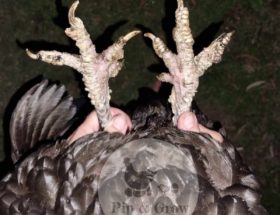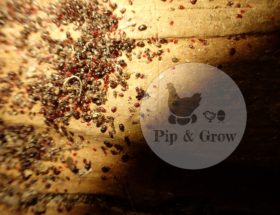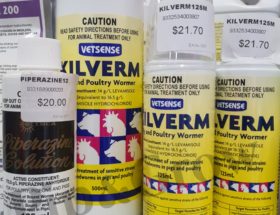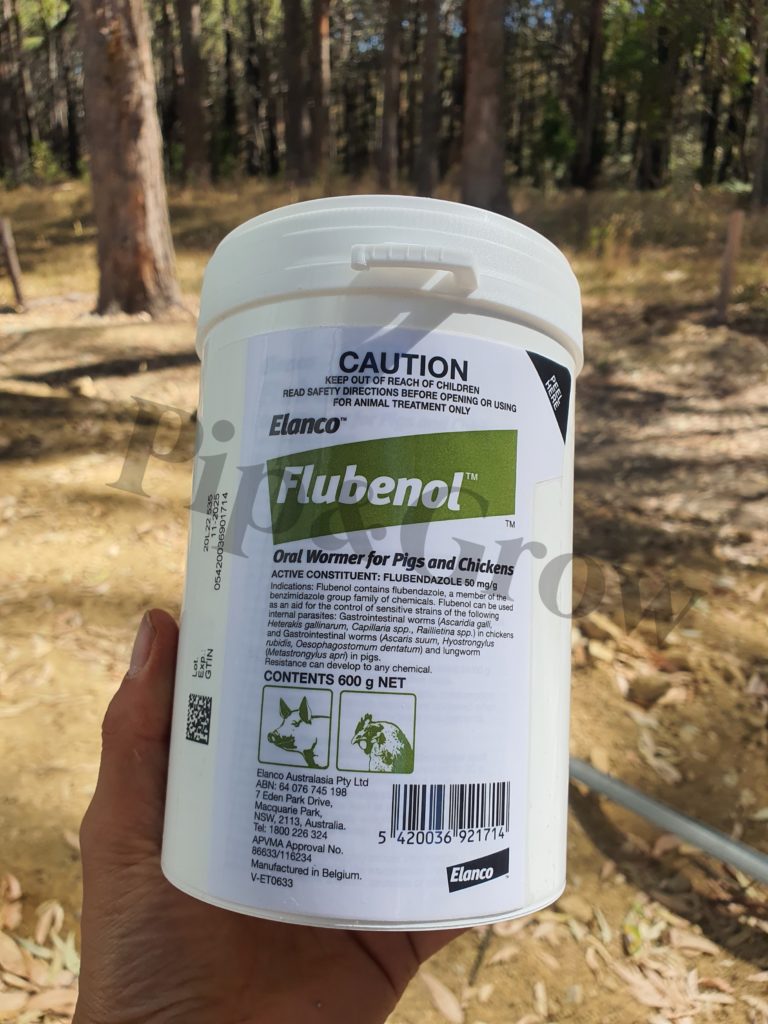
At Pip & Grow, we rely on Elanco Flubenol to effectively worm our birds every three months. This treatment is highly efficient against a variety of common poultry worms, including roundworms, tapeworms, capillary worms, and threadworms. While it’s registered for use against gapeworms in chickens in New Zealand, it’s not approved for this purpose in Australia. Nevertheless, Flubenol is widely approved for poultry use in Australia and many other countries, with no withdrawal period required for meat and eggs, and no adverse effects on fertility or hatchability. An additional benefit is that we don’t need to withhold their feed or water before treatment.
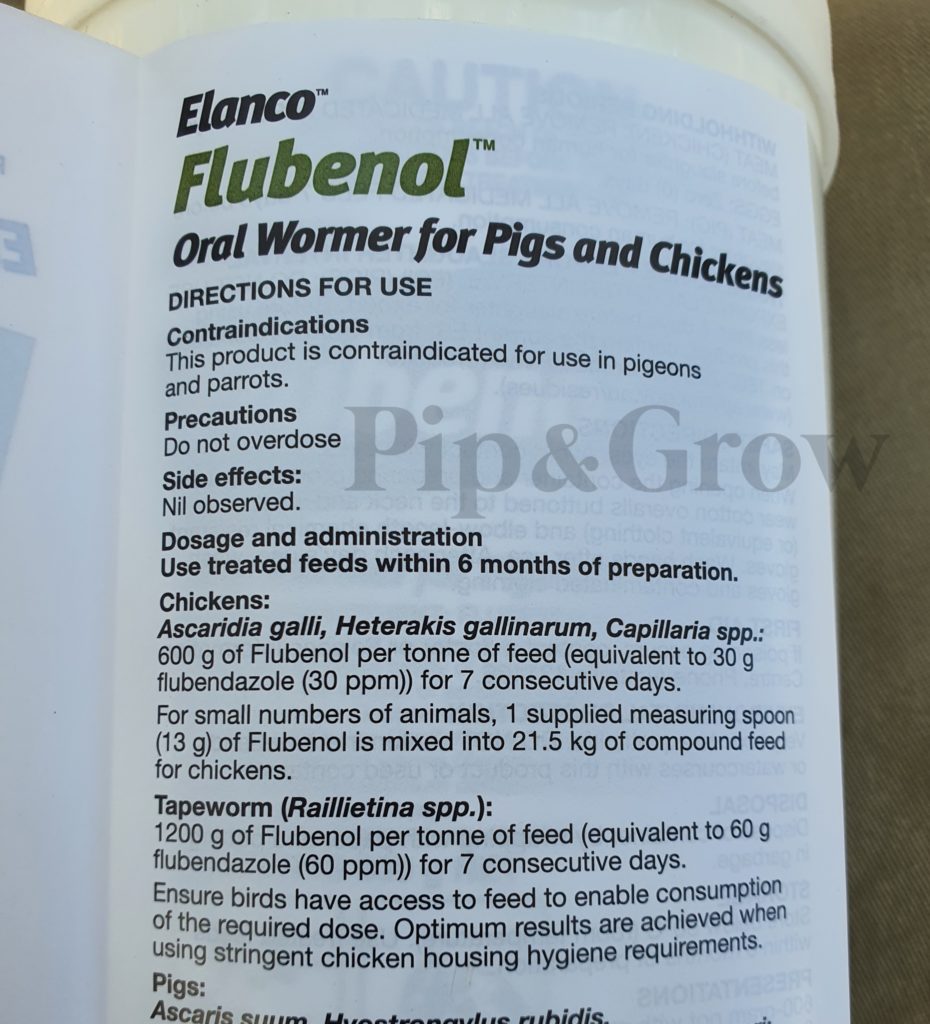
Here’s how we prepare our feed for worming using Flubenol for our flock.
***Please ensure you wear safety gear, including a mask and gloves, while mixing. We apologize for missing this crucial safety advice in the video, where we neglected to wear gloves. This was a mistake. We now always use protective gear when handling the product. It’s important to follow the manufacturer’s safety guidelines to prioritize your safety.***
How we make Flubenol feed
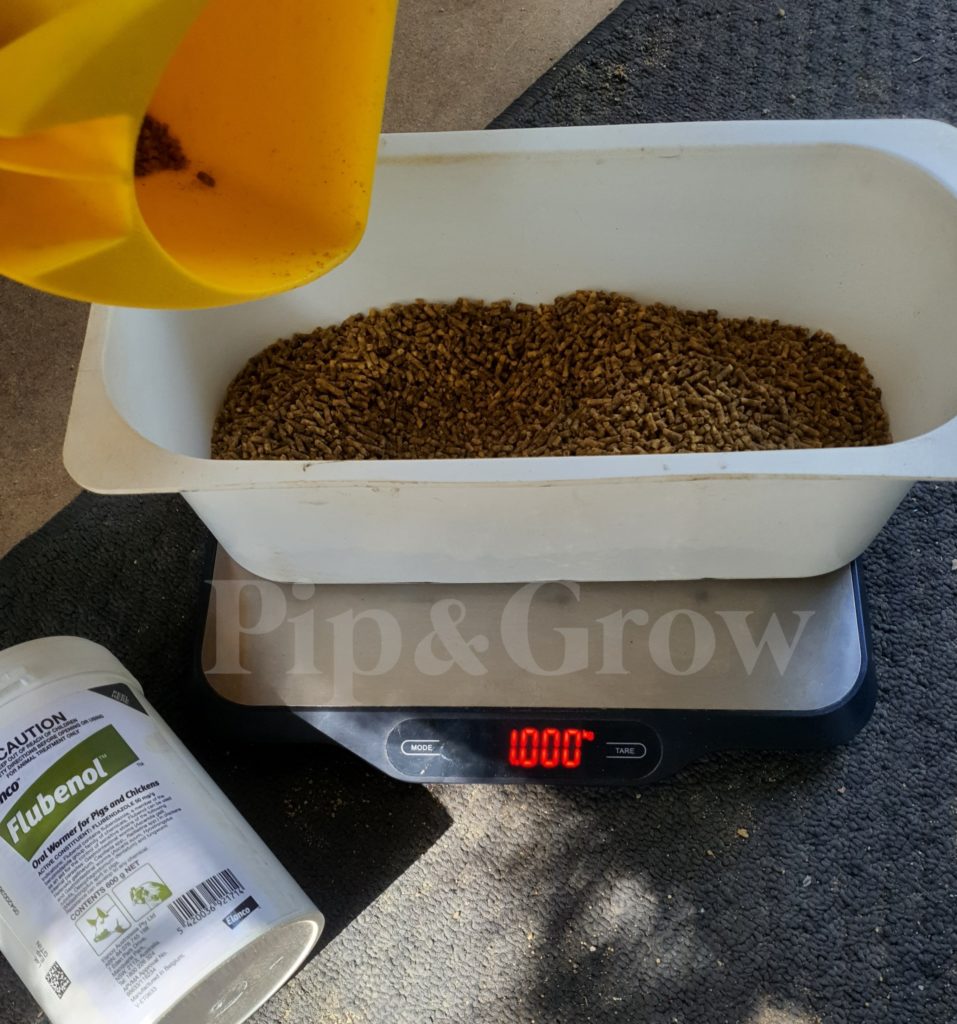
Measure out 1kg of feed (We feed our birds Showbird MP Breeders) x 5 times add to the big storage tub = Total 10kg feed
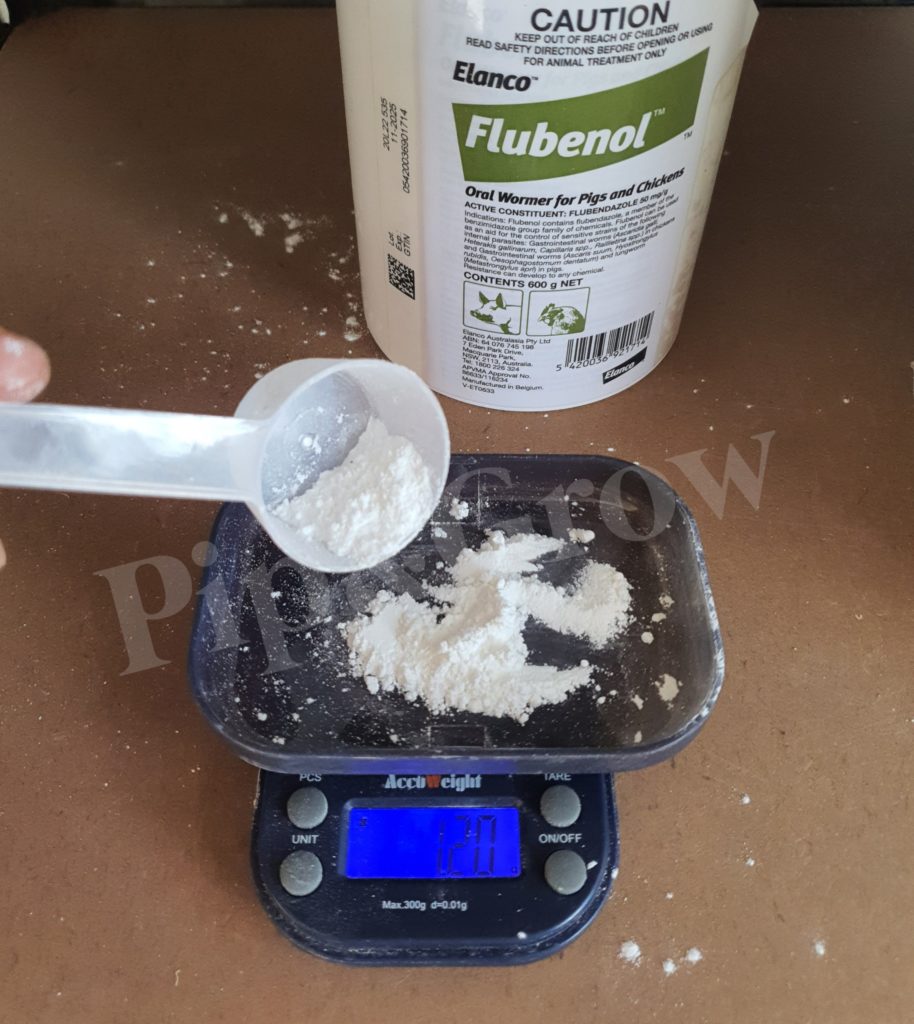
To measure the appropriate amount of Flubenol for treating tapeworms or roundworms, you’ll need to use a precise drug scale, which can be easily found online at an affordable price. Flubenol requires a specific dosage:
- For tapeworm treatment: Measure out 1.2 grams per kilogram of feed.
- For roundworm treatment: Measure out 0.6 grams per kilogram of feed.
Flubenol typically comes with a measuring spoon included. According to the product label, one supplied measuring spoon measures 13 grams. This spoon can be used to measure out the appropriate amount of Flubenol needed for your chicken feed based on the dosage requirements.
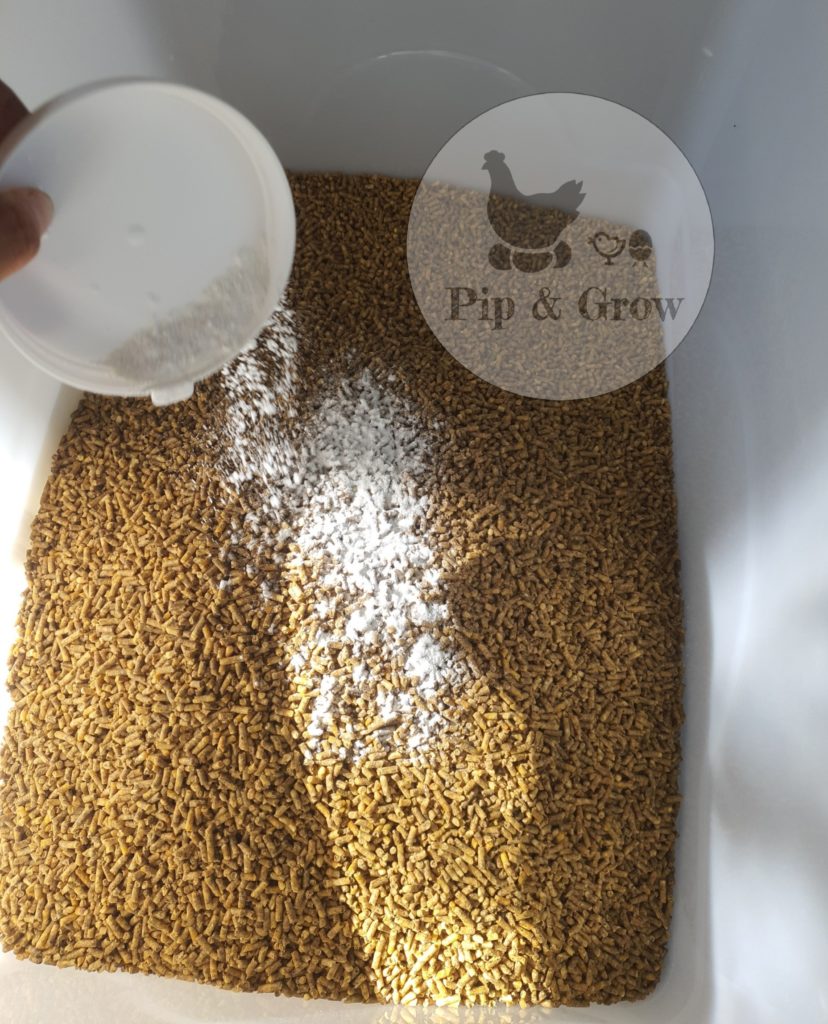
Sprinkle the Flubenol evenly over the feed, ensuring thorough distribution.
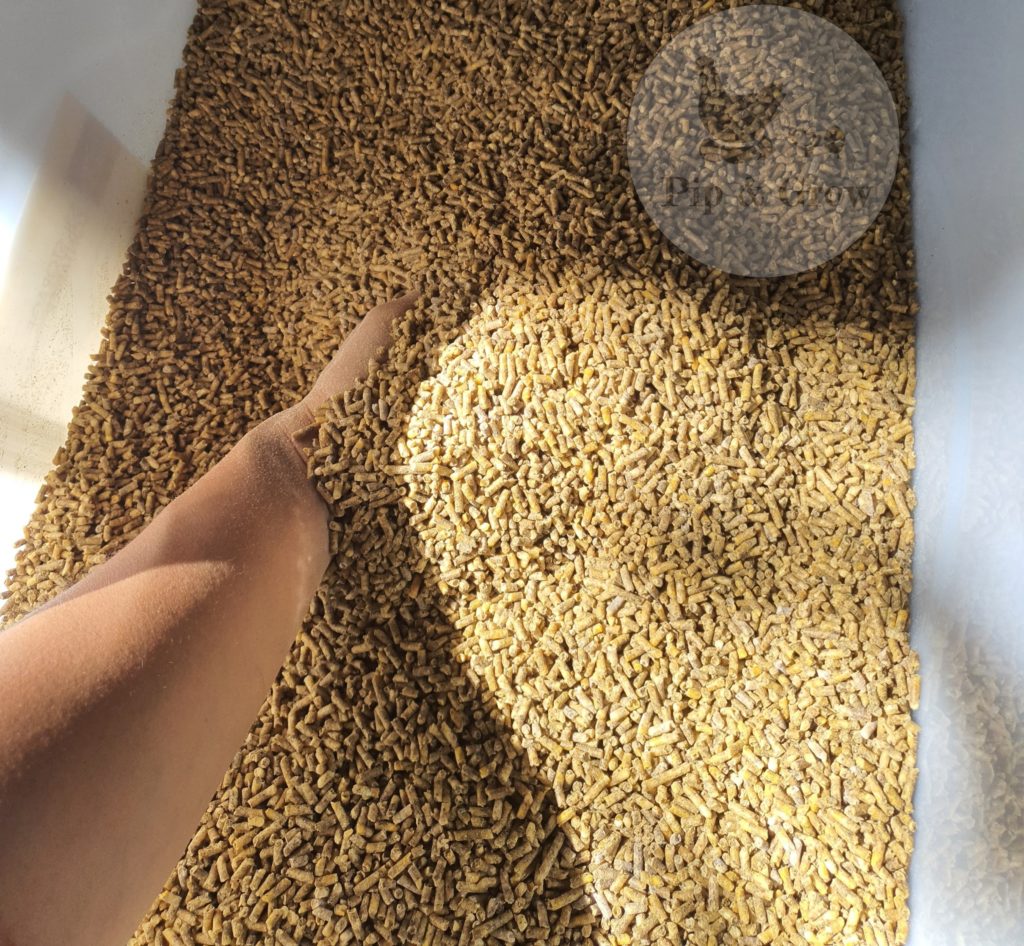
Mix the feed well using your hands. The fine powder of Flubenol integrates seamlessly with the feed, ensuring even dispersion and preventing it from settling at the bottom.
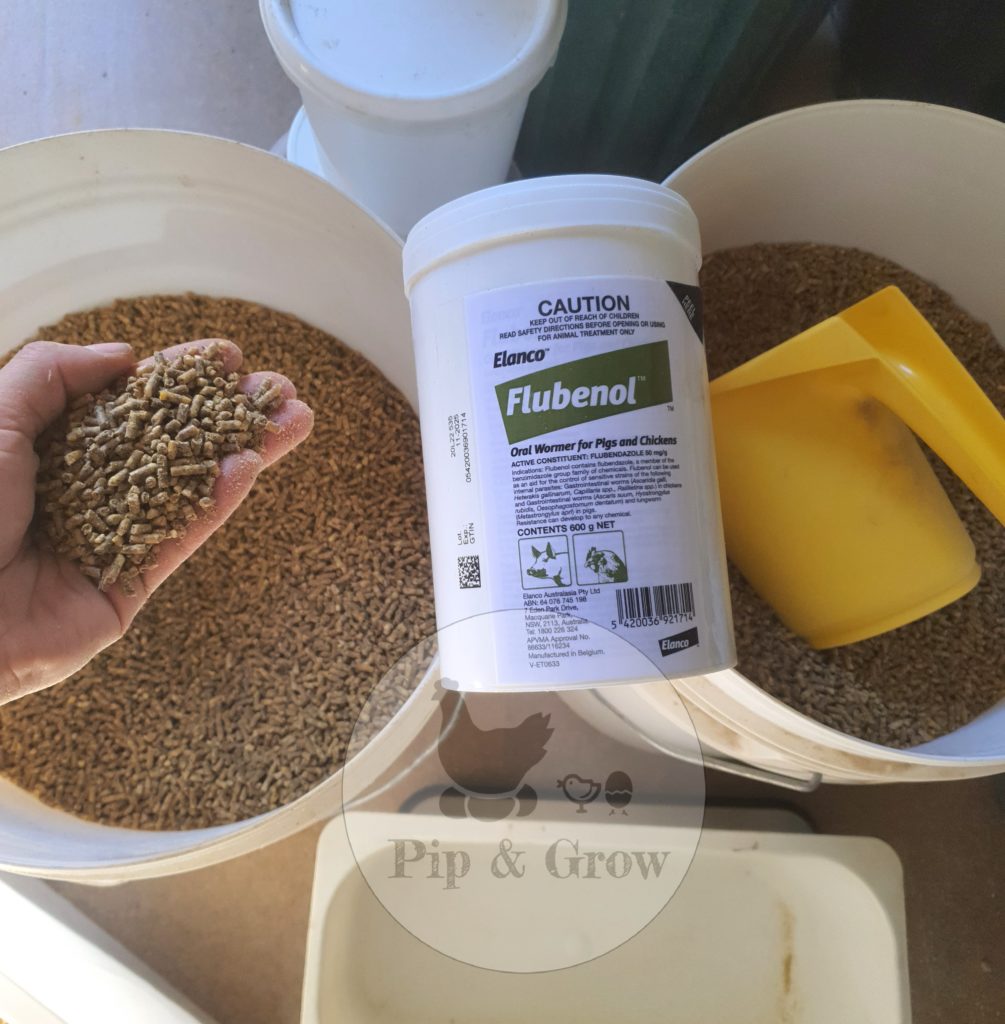
You have the option to prepare feed as needed or create a larger batch, like we do (We makes 150kg for 7 days treatment), sufficient to last for a week. The important part is feed the treated feed for a full seven days, ensuring access to fresh, clean water at all times. Avoid providing any treats during this period to ensure the effectiveness of the treatment.
We haven’t observed any discernible difference in food preference when Flubenol is mixed or not. While it does require some effort in mixing and measuring, as a professional breeder responsible for the care of numerous birds, using Flubenol for worming is not only cost-effective but also a safe option. If you prefer to avoid the hassle of mixing, consider using Vella Stockfeeds Wormer MP, which is poultry feed containing Flubenol pellets and offers a convenient and practical solution.
However, one drawback is that the smallest quantity available for purchase in Australia is 600g, costing around $70-80, which can treat up to 1 tonne of feed. This amount may be challenging for small backyard keepers to use up before the expiry date. It could be worthwhile to team up with other chicken keepers to split the contents, or you can purchase smaller quantities dispensed by veterinarians. Burwood Bird & Animal Hospital offers shipping Australia-wide and may provide smaller quantities suitable for backyard keepers.
Related Post
Worming FAQ
